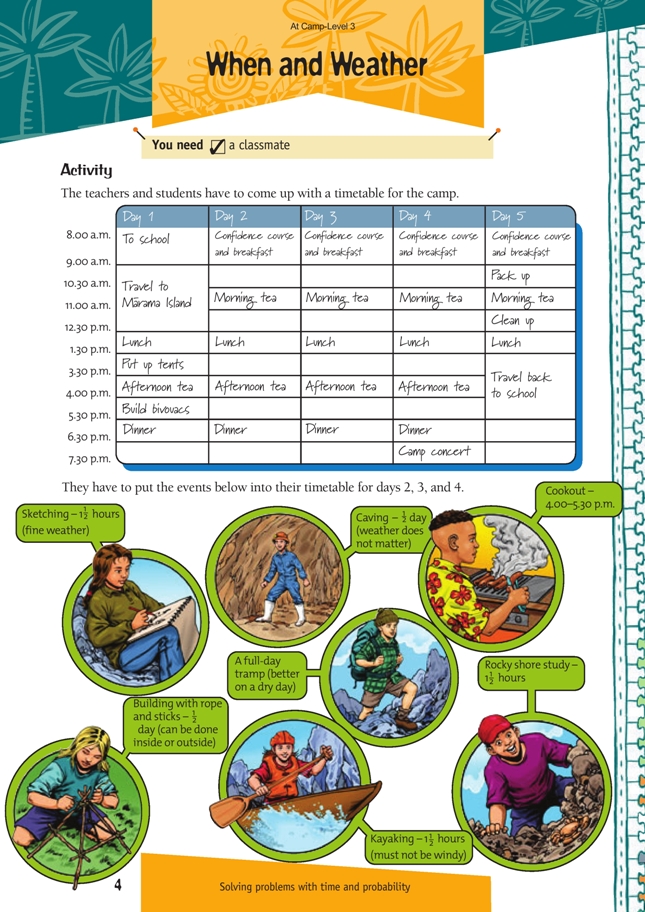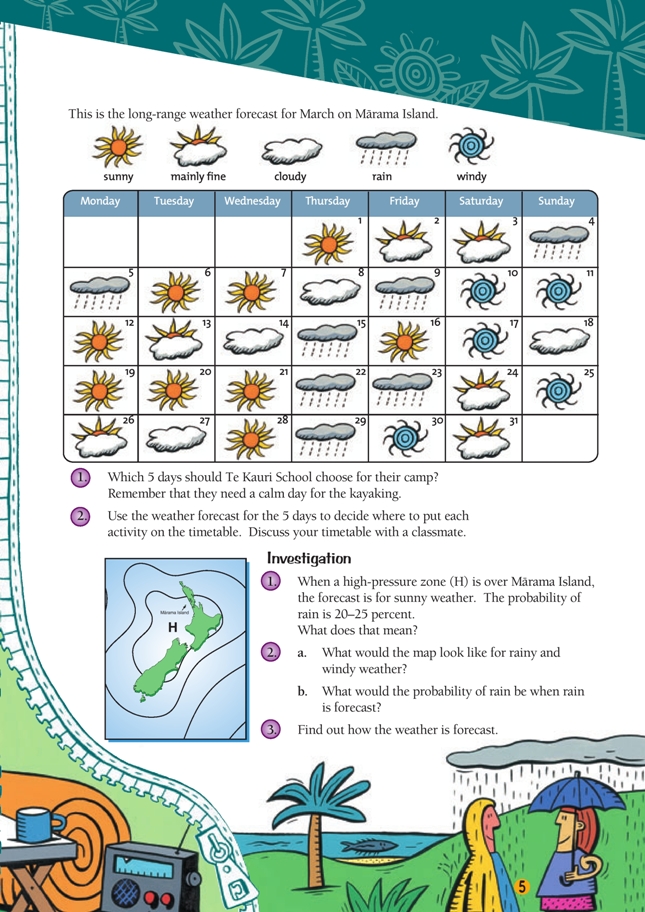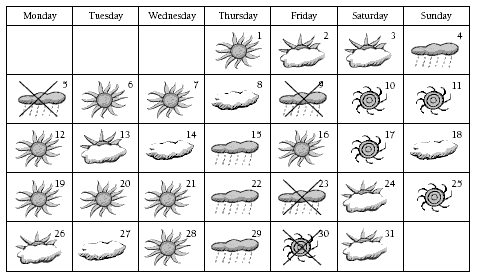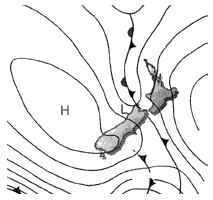This is a level 4 measurement activity from the Figure It Out theme series.
A PDF of the student activity is included.
Click on the image to enlarge it. Click again to close. Download PDF (899 KB)
interpret charts
complete a timetable
A classmate
In considering which 5 days would be best to choose for the camp, students need to think about a number of issues. They need to avoid windy conditions on the days when Te Kauri School will be travelling by boat to and from Mārama Island and on the kayaking day. They should also avoid rainy days on the first and final days of camp because putting up tents in the rain and packing wet tents is difficult. For these reasons, students can eliminate a number of days as possible first and final days.
The chart below is based on the assumption that students (and teachers!) want the camp to be on weekdays, not weekends.
This leaves a small number of strings of 5 days where the eliminated days are not days 1 and 5. If the camp is to be on weekdays only, 12–16 March are the only dates feasible.
Students will need to work out which activities can fit into which time slots. For example, an activity that takes 1 1/2 hours can go in the 9.00–10.30, 11.00–12.30, or 4.00–5.30 time slot.
Encourage students to work out which activities they should place first. The cookout must take place from 4.00–5.30 p.m., and therefore cannot be on the same day as the tramp. Nor would you want it to be! The tramp day should preferably be on an overcast day, to minimise UV radiation (see “Burning Issues”, Measurement, Figure It Out, Level 3, page 20 and the corresponding teachers’ notes for information on UV radiation and weather conditions). Wet conditions would also be unsuitable for the tramp and for the cookout.
After the tramp day is allocated and the cookout set for a different day, students can place the other activities. They should try to have a mix of energetic and more restful activities on the same day. For example, kayaking (energetic) could be combined with sketching (restful) or caving combined with building with ropes and sticks.
The predicted weather in that week may influence the choice of days on which other events will occur. Kayaking and caving may not be affected too much by wet weather on Thursday, 15 March, but sketching will be.
Investigation
The answers section provides the information students need for this investigation, apart from the research exercise at question 3. A useful website for this is www.metservice.co.nz/knowledge, which provides information for schools and weather enthusiasts.
Answers to Activity
1. Answers will vary. One likely answer is 12–16 March because there is suitable weather for each activity and for putting up and taking down tents.
2. Answers will vary.
Investigation
1. Although the forecasters cannot say for sure that there will be no rain, they are confident that on at least 75% of days with a weather pattern like this there is no rain.
2. a. Usually there will be a low over most of the country. Isobars are close together,
indicating a change of air pressure within a short distance and therefore stronger wind.
b. The probability of rain is not usually 100%. If a probability of 80–90% is
given, forecasters are very confident it will rain.
3. Research activity



